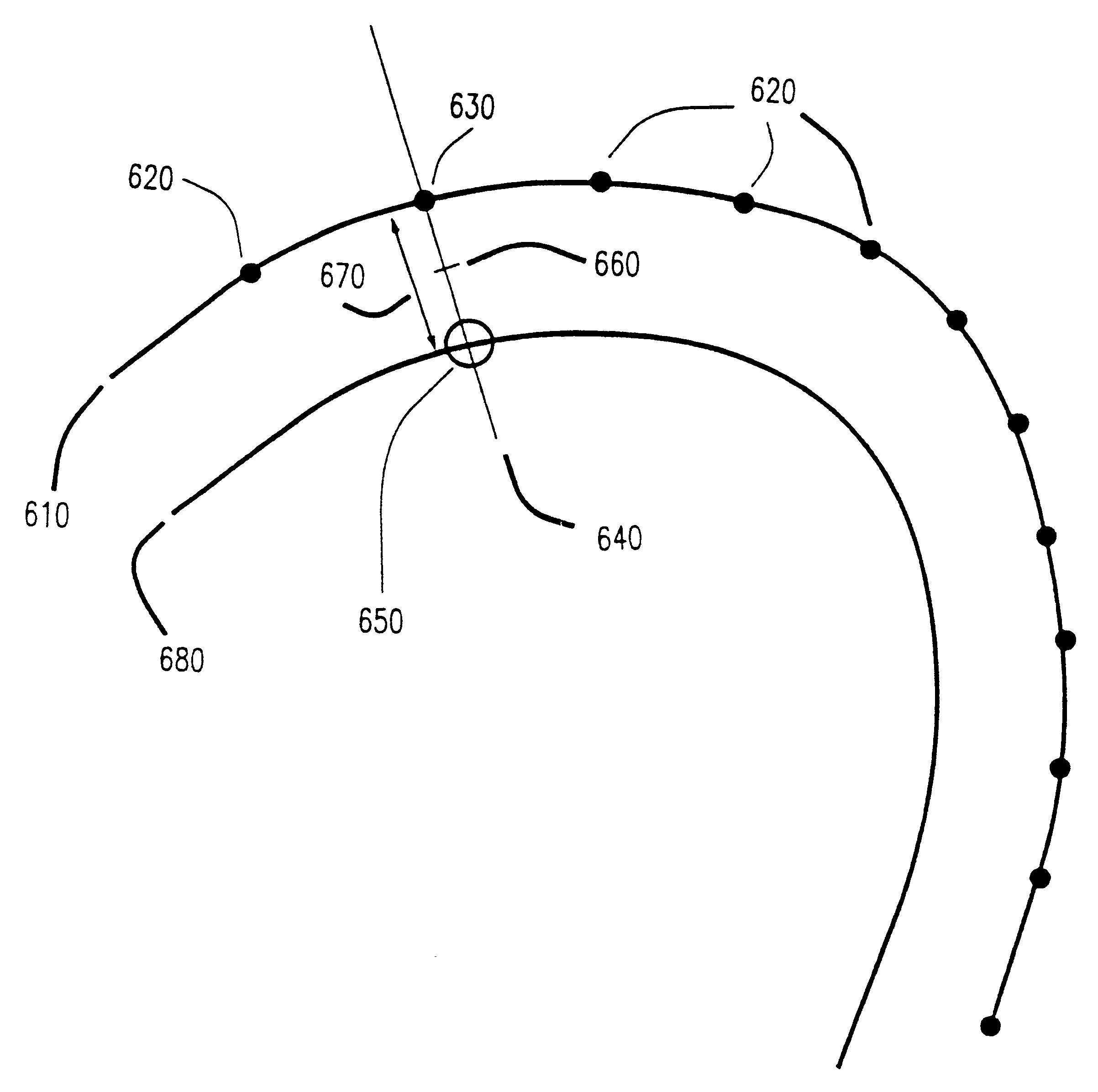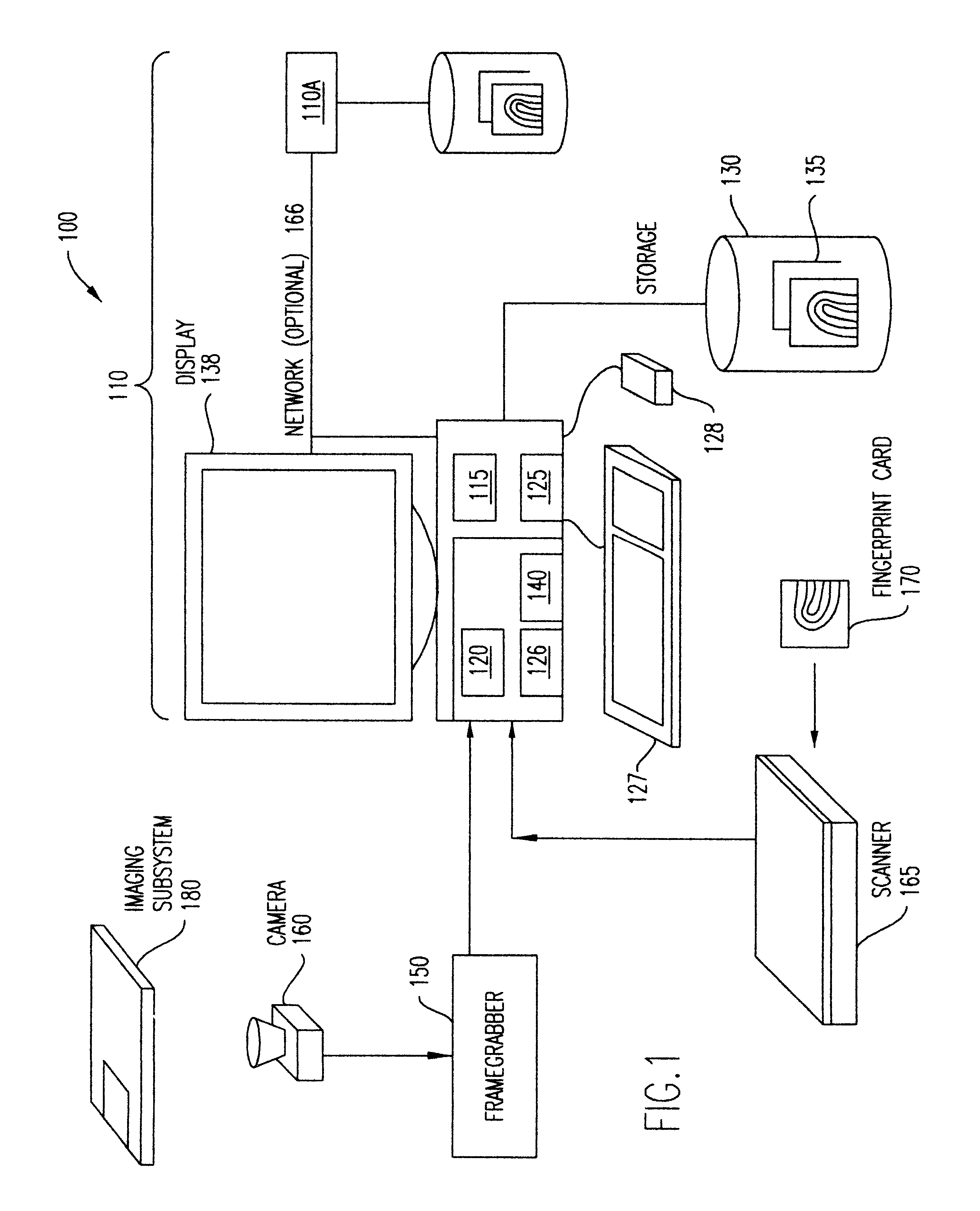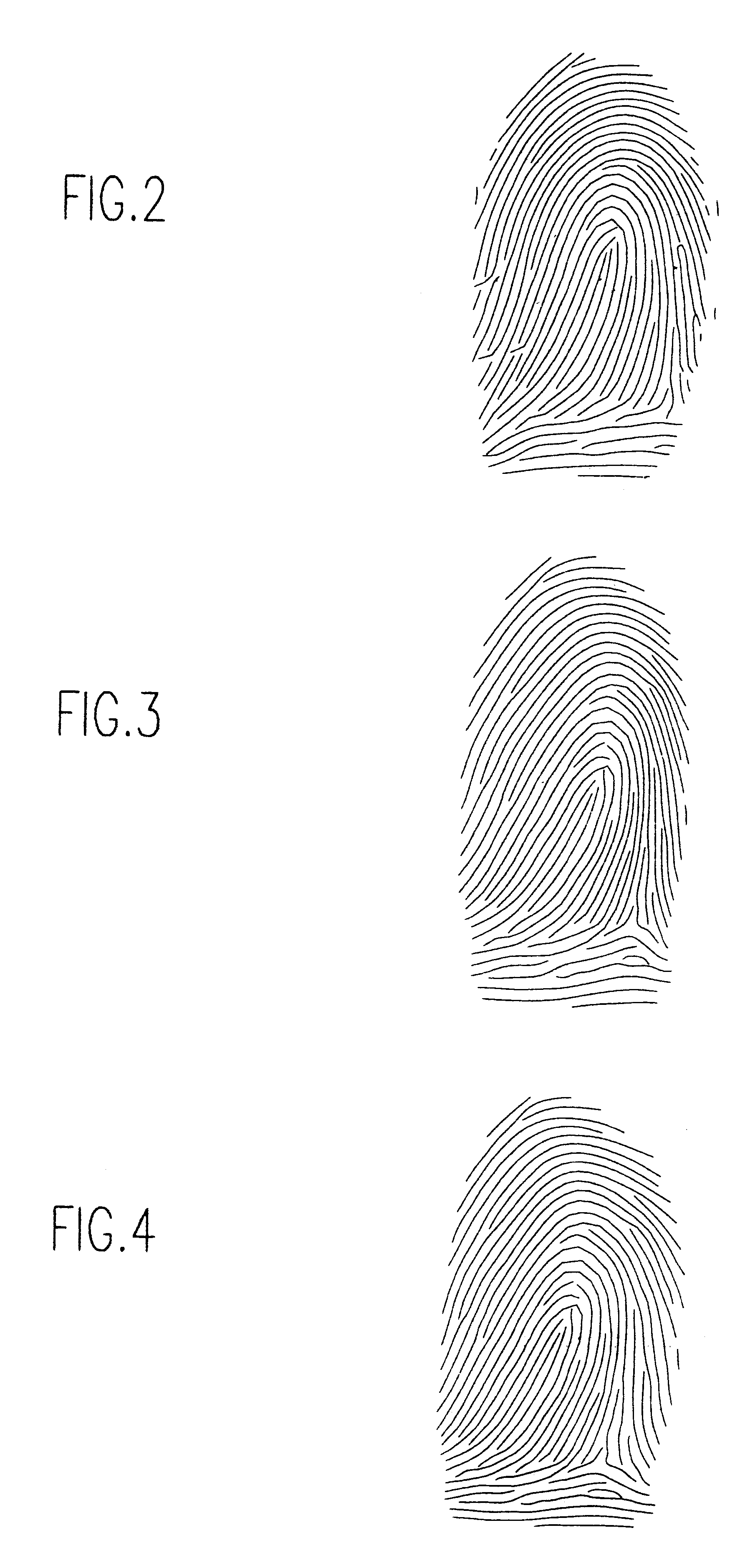System and method for transforming fingerprints to improve recognition
a fingerprint and fingerprint technology, applied in the field of image processing, can solve the problems of inability to compare fingerprints, inability to distinguish fingerprints, and inability to accurately detect fingerprints,
- Summary
- Abstract
- Description
- Claims
- Application Information
AI Technical Summary
Benefits of technology
Problems solved by technology
Method used
Image
Examples
Embodiment Construction
Referring now to the drawings, and more particularly to FIG. 1, there is shown a block diagram representation of a general computer hardware environment that is used as the image processing system 100. This system includes a computer 110 which may be a personal computer (PC), such as one of International Business Machines Corporation (IBM) Personal System / 2 (PS / 2) family of Personal Computers, a work station, such as IBM's RISC System / 6000 workstation or workstations in a network. The invention may be implemented on a variety of other and equivalent hardware platforms such as, for example, an n-WAY IBM SP2 machine with AFS for storage. The SP2 is a collection IBM RS / 6000 engines running under a common umbrella and the AIX operating system (IBM's version of the UNIX operating system) and connected with a high speed switch. It could also be implemented on other hardware platforms including, but not limited to, mini computers, stand alone UNIX or Windows NT workstations, or, or mainfra...
PUM
 Login to View More
Login to View More Abstract
Description
Claims
Application Information
 Login to View More
Login to View More - R&D
- Intellectual Property
- Life Sciences
- Materials
- Tech Scout
- Unparalleled Data Quality
- Higher Quality Content
- 60% Fewer Hallucinations
Browse by: Latest US Patents, China's latest patents, Technical Efficacy Thesaurus, Application Domain, Technology Topic, Popular Technical Reports.
© 2025 PatSnap. All rights reserved.Legal|Privacy policy|Modern Slavery Act Transparency Statement|Sitemap|About US| Contact US: help@patsnap.com



